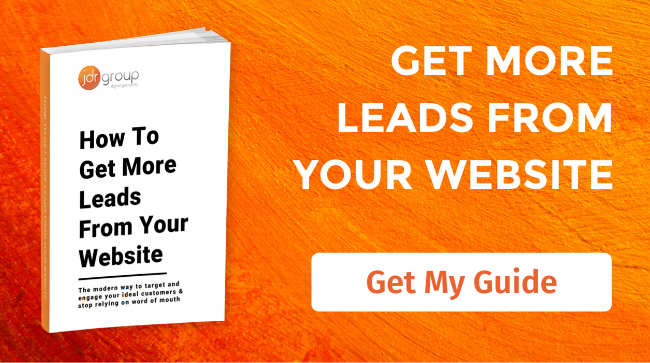The Leads Are Coming In, So What's Next? - 5 Steps To Transforming Your Leads Into Customers
 If you’re starting to get more leads coming in from your website, social media platforms, or a live event, its a cause for celebration. You can’t make sales without leads, but now people are showing an interest in your business, the most important part of the process begins. All your search engine optimisation (SEO), content marketing, and pay per click (PPC) advertising efforts are a prelude to the real work – closing the deal. In this article, we discussed the five steps you need to take to transform your hopeful prospects into paying customers.
If you’re starting to get more leads coming in from your website, social media platforms, or a live event, its a cause for celebration. You can’t make sales without leads, but now people are showing an interest in your business, the most important part of the process begins. All your search engine optimisation (SEO), content marketing, and pay per click (PPC) advertising efforts are a prelude to the real work – closing the deal. In this article, we discussed the five steps you need to take to transform your hopeful prospects into paying customers.
1) Strike while the iron is hot
“It’s okay, I’ll leave it till after the weekend.”
Many businesses – especially small businesses that depend on directors or the company owner to make sales – have set days for sales, or times of the day in which they respond to enquiries. This is the most common conversion mistake businesses make because, like you, your prospects are busy people with a lot going on. Unless you act immediately when an enquiry is made, the lead will very quickly go cold. “After the weekend” the lead may no longer be interested, could have signed with a competitor, or may no longer remember who you are!
Fast and relevant replies are not always possible unless you have a marketing automation system in place, because it’s often not physically possible for a salesperson to make a personal response to every enquiry. This is especially so if you have a lot of leads coming in at once in response to a campaign. A platform like HubSpot allows you to create auto responder messages in advance so that prospects get an immediate thank you and welcome message as soon as they sign up for your email list. Further communications are triggered by their behavioural responses, such as visiting a page on your site or claiming a piece of gated content. This saves you valuable time and ensures that communication doesn’t slip, keeping the conversation going as you nurture the lead into a paying customer.
2) Communicate at the right time and in the right way
Your business may be a match made in heaven for your prospect, but if they don’t have time to read your emails, you’ll probably never know. The key to your communications getting through is to send them at the right time, and this involves understanding your target buyers, their working patterns, and their communication preferences. Sending messages as a time they are most likely to be read is crucial if you’re communicating with customers outside of your time zone, but it is equally important for buyers within the UK.
Do your target buyers generally catch up with emails in the evening, or is it a morning coffee activity? Central to any marketing and sales campaign is a good understanding of your buyer personas. Creating a buyer persona document is a thought experiment in which you examine all the potential motivations of your target audience and what makes them tick, including the pressures they face at work, when they are most busy, and how they like people to communicate with them. You might find, for instance, that some people are more accessible through social media or WhatsApp messages during the day rather than email, or that other buyer types prefer phone contact. Getting these important details right will increase your chance of conversion.
3) Create a meaningful dialogue
“I do this, we do that, we are great because this” is a monologue, not a dialogue, and many people find monologues boring and unengaging. The relationships you have with your paying customers are two-way exchanges, not one-sided pitches, so start with your prospects as you mean to go on. Yes, the onus is on you to make the first move in your relationship with your prospects, but take the time to encourage questions and engagement from them, providing the means for them to do so. Opportunities for engagement include finding out about how your services and products address their requirements, providing them with a choice of informative content, and always requesting feedback in order to better tailor your communications to your customer’s needs.
4) Be persistent
It’s polite to give people time to consider the content you send them before asking them to make a decision, but don’t let your communications slip. Be persistent in your efforts to engage with people, following up your leads by email or phone, and give people multiple opportunities to ask questions, explore your website, and find out about your services and products on a timescale that suits their purchase requirements. It is rare for a lead to convert on the first attempt, so expect to drip feed content to a prospect over a number of weeks or months before you either get the purchase, or a clear indication that the prospect is not interested (e.g. through consistent and sustained lack of engagement).
5) Don’t be shy: ask for the sale!
People expect salespeople to ask them for money at some point, but many salespeople are surprisingly reluctant to ask to close the deal, resulting in conversations with leads that drag on for far too long, and eventually fizzle out. If you put the effort into the nurturing process with good, relevant content, and you believe in your product, then ask for the sale when the time is right.
Of course, not all leads will be ready to buy from you straightaway, and pushing a sale too early can be counter-productive. Some people may be simply finding out about the type of product you offer in a general way, while others may be actively comparing service providers with a budget already in place. You will need different types of content and different messages for buyers at each stage, and it’s important to quickly identify what stage of the buyer journey each lead is at, at their point of first contact.
Boosting your conversion rate. Lowering your cost per sale
Most marketing agencies cease their involvement after a website visitor becomes a lead. Everything else is ‘sales’, after all. However, at JDR we recognise that sales and marketing are part of the same process, the goal of each being to grow your revenues and expand your business. So a key part of our tailored marketing support for our customers is to help them boost their lead to sale conversion rate and lower their overall cost per sale. For more advice about how to transform your leads into customers and the most efficient ways to go about it, please call one of our sales and marketing specialists today on 01332 343281.
Image Source: Unsplash



